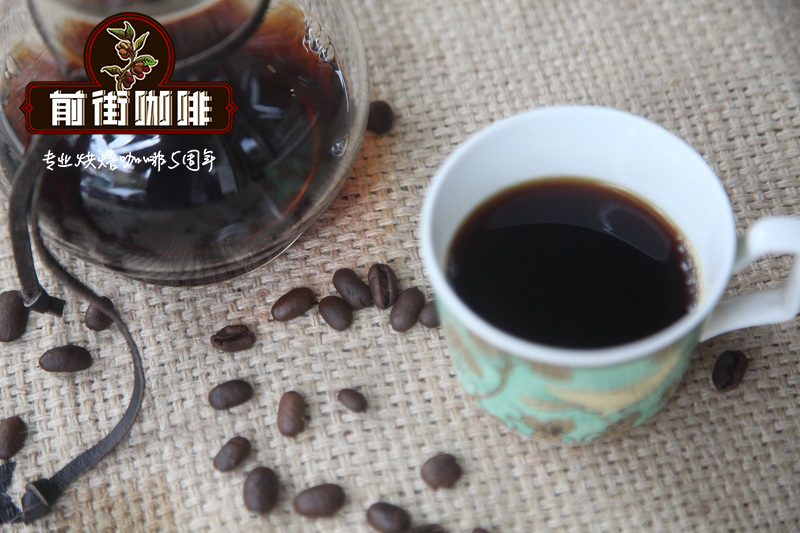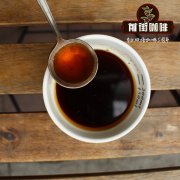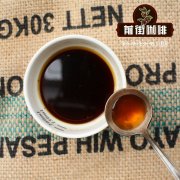How should the coffee be roasted? What are the characteristics of Ye Jia Xuefei coffee

Professional coffee knowledge exchange more coffee bean information please follow the coffee workshop (Wechat official account cafe_style)
Ethiopia is the birthplace of Arabica coffee beans and the country where coffee was first discovered. There are still many wild coffee varieties in the Kaffa primeval forest. The first one given by Ethiopia
The impression is usually poverty, backwardness and hunger, no history, lack of culture. In fact, had it not been for the chaos of the war, Ethiopia would have been a beautiful country with an ancient history and civilization. It has the largest topography of the Great Rift Valley on earth, is the true birthplace of human beings, and is the site of the biblical legendary Garden of Eden, which houses the richest wildlife and birds in East Africa, especially in the largest Avash National Park. Ethiopia is one of the few African countries with an ancient traditional history. Every city in Ethiopia has its own story and personality. It is located in the former capital of Adis Abba, which is more than 2400 above sea level, which means flowers.
There are mainly eight major producing areas in Ethiopia: Ekempti, Limu, Illubabor, Djimma, Harrar, Teppi/Bebeka, Sidamo and Yirgacheffe.
Yirgacheffe is located in the Gedeo region of southern Ethiopia. The jurisdiction of this area is well known as Yegashefi and Kochere. As the coffee produced by Yirgacheffe has a unique flavor and is widely loved, it has its own style in product classification and has always occupied a place in the global boutique coffee market. Yirgacheffe, in the province of Sidama, is itself a small town, with three small producing areas of Wenago, Kochere and Gelena Abaya nearby. Because the flavor of coffee produced is almost the same as that of Yega Sheffield, Kochere is also classified as Yega Sheffield. Ethiopia implemented a new trading and grading system in November 2009, with the establishment of the Commodity Exchange (ECX), through which coffee and other agricultural products were made public by this official institution, in addition to Yega Xuefei, three new by-product areas such as Wenago, Kochere and Genlena Abaya were added, which shows that the flavor of these three areas is so detailed that it can be subdivided.
Since Ethiopia is considered by most people to be the origin of coffee, there are more than 4, 000 unnamed coffee varieties in Ethiopia, so when buying Ethiopian coffee beans, most of them will be marked as Heirloom. Coffee beans are big and small, and the same batch of coffee beans will contain more than ten coffee varieties, which can not be summarized as specific varieties in Central and South America. However, a major progress in recent years is that the world-famous raw bean merchant Ninety Plus (or 90+) began to plan to plant a single variety of Yejiaxuefei, also known as VARON (Variety variety + One single). The flavor is quite clean, but the established impression of floral and citrus is no longer so strong, but into a thicker cup of dried coffee and fruit tea, with a more spicy flavor. This kind of coffee has its particularity and significance, but whether the price and flavor can be accepted may be another matter.
[baking degree]
What baking degree should Ethiopia's Yega Xuefei choose?
If it is washed in water: it is recommended that you like the fragrance of flowers and sour fruit. Select shallow baking, medium baking
-focus on sweetness, can accept less aroma, fruit acid, choose medium baking +
If it is in the sun, sun-dried beans: all of the above advantages. Compared with washed beans, it is more fruity and less sour.
In the past, the sun of street coffee [berry orchard] as an example, we chose medium-shallow roasting, which can not only highlight the flavor of this bean, but also retain a certain taste.
Qianjie cooking parameters are suggested:
V60According to 1GRAPR 1589 ℃ / two minutes.
Flavor: strawberry, strawberry jam, cream, sucrose sweetness.
Important Notice :
前街咖啡 FrontStreet Coffee has moved to new addredd:
FrontStreet Coffee Address: 315,Donghua East Road,GuangZhou
Tel:020 38364473
- Prev

Where is the Kenyan coffee growing location? Kenya kangunu Kangunu treatment Plant washing
Professional coffee knowledge exchange more coffee bean information please follow the coffee workshop (Wechat official account cafe_style) where is the location of Kenyan coffee grown? Description of the flavor characteristics of washed coffee in Kenya kangunu Kangunu treatment plant? The Kangunu processing plant is located in Embu, an important coffee producing area on the south-eastern slope of Kenya. This area has an average high altitude of 1650 meters.
- Next

How Roasted is Yerga Shefi Coffee Bean? Yerga Sherfi Light Roast Flavor Features
Professional coffee knowledge exchange More coffee bean information Please pay attention to coffee workshop (Weixin Official Accounts cafe_style) Ethiopia mainly has eight producing areas: Ekempti, Limu, Illubabor, Djimma, Harrar, Teppi/Bebeka, Sidamo, Yirgacheffe. Yirgacheffe is located in the Gedeo region of southern Ethiopia.
Related
- Detailed explanation of Jadeite planting Land in Panamanian Jadeite Manor introduction to the grading system of Jadeite competitive bidding, Red bid, Green bid and Rose Summer
- Story of Coffee planting in Brenka region of Costa Rica Stonehenge Manor anaerobic heavy honey treatment of flavor mouth
- What's on the barrel of Blue Mountain Coffee beans?
- Can American coffee also pull flowers? How to use hot American style to pull out a good-looking pattern?
- Can you make a cold extract with coffee beans? What is the right proportion for cold-extracted coffee formula?
- Indonesian PWN Gold Mandrine Coffee Origin Features Flavor How to Chong? Mandolin coffee is American.
- A brief introduction to the flavor characteristics of Brazilian yellow bourbon coffee beans
- What is the effect of different water quality on the flavor of cold-extracted coffee? What kind of water is best for brewing coffee?
- Why do you think of Rose Summer whenever you mention Panamanian coffee?
- Introduction to the characteristics of authentic blue mountain coffee bean producing areas? What is the CIB Coffee Authority in Jamaica?

